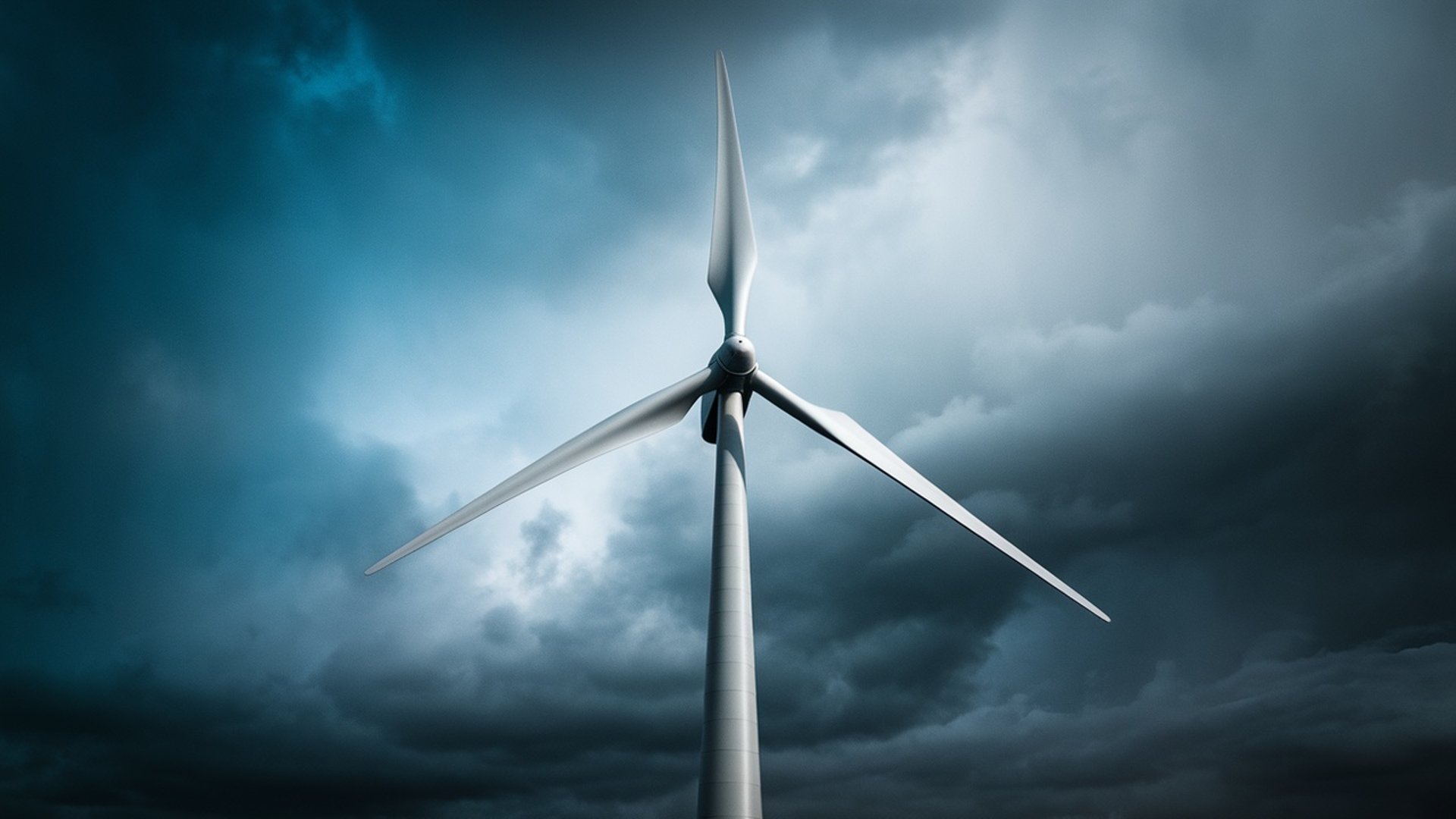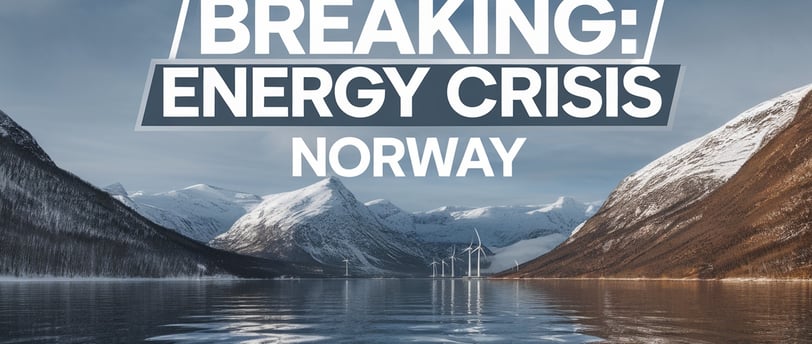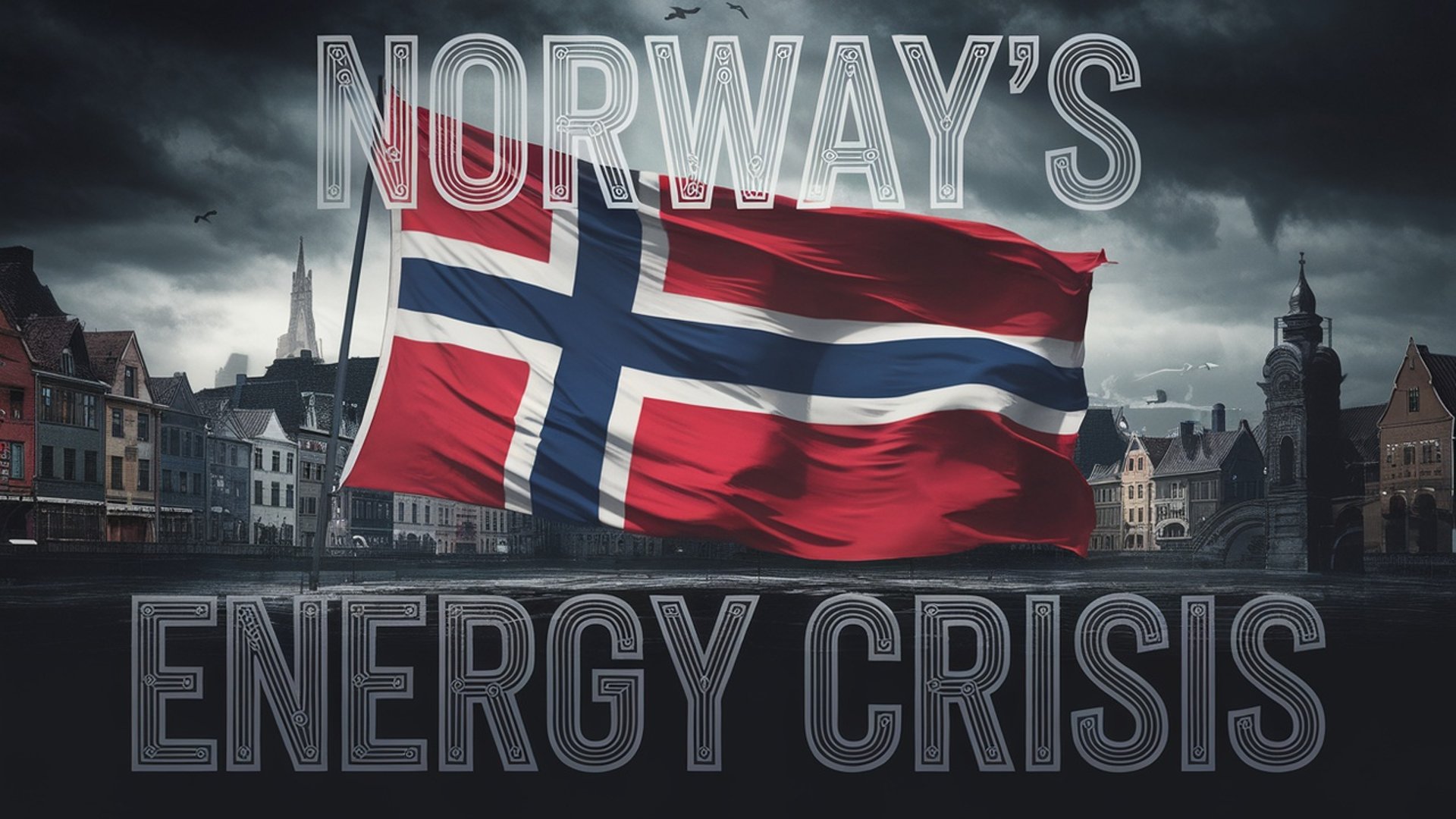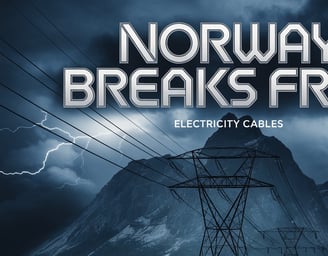
Norway aims to cut energy links with Europe due to soaring prices
Norway, known for its abundant hydropower resources, is grappling with an unprecedented surge in electricity prices.
NEWSHOME
12/16/20245 min read


In some regions, costs have soared to six times the EU average, prompting a reassessment of its energy export strategy. This has sparked debates not only within Norway but across Europe, particularly in Germany, where reliance on renewable energy sources has introduced its own set of challenges.
Norway’s Energy Dilemma
Electricity prices in Norway have become a focal point of public and political frustration. In the southernmost regions, prices have exceeded 13 kroner (€1.12) per kilowatt-hour during peak hours, compared to the EU average of €0.1867 per kWh in early 2024. While hydropower accounts for a significant portion of Norway’s energy production, around 10% comes from wind power imported from the continent. Fluctuations in wind energy supply, especially during calm weather conditions in Germany and the North Sea, have contributed to price volatility.
Reacting to the crisis, Norway’s ruling Labour Party and its coalition partner, the Centre Party, have pledged to reconsider or terminate power interconnectors with Denmark and potentially other European countries when they come up for renewal in 2026. “We cannot continue this way. It has gotten out of control,” remarked Are Tomasgard of the Labour Party, signaling a broader shift towards prioritizing domestic energy affordability over international obligations.
Germany’s Renewable Energy Transition: A Double-Edged Sword
Germany’s “Energiewende”—the ambitious transition to renewable energy—has faced significant hurdles. While the country aims to reduce its carbon footprint by relying on solar and wind energy, these sources’ intermittent nature has posed challenges:
1. Supply Variability: Renewable energy production is highly weather-dependent. During winters with minimal sunlight and low wind speeds, energy output declines, leading to increased reliance on imports and higher prices.
2. Economic Strain: Industrial consumers in Germany pay an average of €0.30 per kWh, significantly higher than many other European nations. These elevated costs have driven some companies to relocate operations, weakening Germany’s industrial base.
3. Nuclear Phase-Out: The decommissioning of nuclear power plants has removed a stable energy source, exacerbating the energy gap during periods of low renewable output.



Commentary
As I see it, since we are not there yet, especially in the EU, in terms of wind and solar energy, it seems quite crazy to implement policies that prioritize these sources while dismantling existing power plants. Germany’s decision to take down many of its power plants in the name of saving the planet and building a better future is understandable in principle but flawed in execution. The reality is that countries like China and others that dominate global manufacturing are still heavily reliant on traditional power plants. They are not making the same sacrifices, which puts countries like Germany at a disadvantage.
This shift has significantly affected Germans, both individuals and businesses. Electricity bills are now higher than ever, and many companies, from what I’ve heard, are leaving Germany due to the skyrocketing costs. It’s as if they cannot benefit from the current system because it decreases profits while making life tougher for everyone. Solar and wind energy prices, combined with the dismantling of traditional energy infrastructure, are not helping anyone. Until we reach the stage where we can solely rely on solar and wind, we cannot afford to abandon what was already working.
I believe we should focus on a balanced approach—using both renewable and traditional energy sources without making life unnecessarily hard for businesses and citizens. Tearing down power plants before achieving perfection in renewable energy systems is not practical. Winter, in particular, highlights the flaws in this approach. With little sun and wind, especially in Europe where it’s frequently cloudy even in summer, these renewable sources fall short. This forces people to pay more for heating and increases pressure on households and businesses alike.
Governments should prioritize stability and affordability over premature transitions. They need to ask critical questions: Are we stable yet? Can solar and wind reliably support us through winter? If not, it’s unwise to dismantle systems that are currently effective. Failing to do so risks depleting businesses, increasing costs for everyone, and putting undue pressure on ordinary citizens. The EU should take a step back and reassess these policies before pushing forward with renewable energy initiatives that we are not yet technologically equipped to sustain.


Economic and Political Implications
The interplay between Norway’s energy export policies and Germany’s renewable energy strategy highlights the complexity of Europe’s energy landscape. For Norway, exporting electricity was historically a source of revenue and goodwill. However, current high domestic prices have led to calls for restricting exports until local needs are met.
In Germany, the reliance on renewables without adequate storage technology or backup systems has proven costly. Businesses and consumers alike are bearing the brunt of high energy bills. For example, in winter months, energy costs surge due to increased demand coupled with low renewable output, straining household budgets and industrial profitability.
Additionally, Norway’s stance is likely to set the tone for political debates leading up to next year’s elections. High electricity prices have fueled public discontent, and policymakers are under pressure to prioritize domestic interests over European commitments. The Laboure Party’s decision not to renew the "Denmark cables" reflects a broader sentiment of energy nationalism.
The Broader Context: Renewable Energy Challenges
Europe’s ambition to lead the global fight against climate change has driven aggressive renewable energy targets. However, these goals often collide with economic realities. For instance:
- Storage Limitations: Renewable energy depends on weather conditions, and without advanced storage solutions, energy supply cannot be stabilized.
- Infrastructure Gaps: Existing grids are not equipped to handle the variability of renewable energy.
- Global Competition: While Europe transitions, countries like China continue to rely on fossil fuels, gaining a competitive edge in manufacturing.
A Path Forward
As Europe navigates its energy transition, several considerations emerge:
1. Diversified Energy Mix: While renewable energy is essential for sustainability, a balanced mix that includes nuclear and natural gas can ensure stability and affordability.
2. Investment in Technology: Advancing energy storage solutions and grid infrastructure can mitigate the variability of renewable sources.
3. Collaborative Policies: Regional cooperation is vital. Countries like Norway and Germany must balance national interests with collective European energy security.
4. Realistic Timelines: Policymakers must align renewable energy goals with technological advancements, ensuring that transitions are economically and socially sustainable.
Conclusion
The current energy crisis underscores the challenges of transitioning to a renewable energy-dominated system. Norway’s reconsideration of its energy links with Europe reflects broader frustrations with volatile markets and high prices. For Germany, the lesson is clear: ambition must be matched by technological and infrastructural readiness. Until then, both countries face tough decisions to ensure energy remains accessible and affordable for all.
Europe must strive for a balanced approach that supports both sustainability and economic growth. Only by addressing the limitations of current renewable technologies and fostering international cooperation can the continent achieve its energy and climate goals without compromising the well-being of its citizens.


